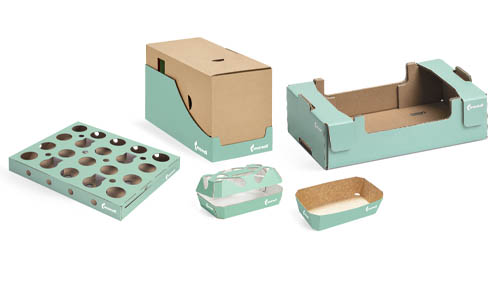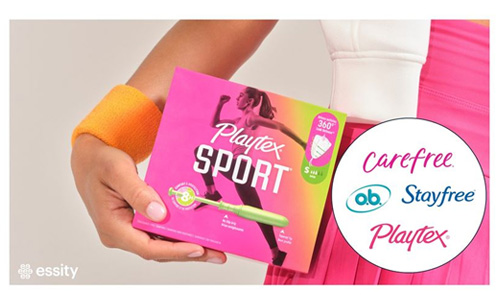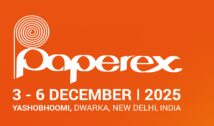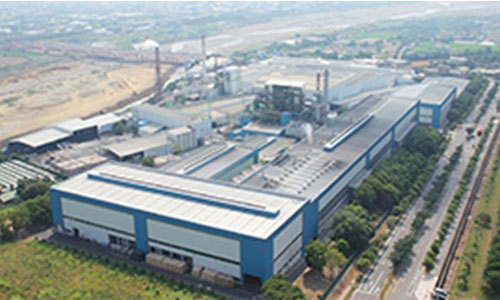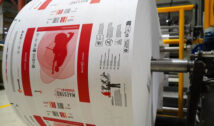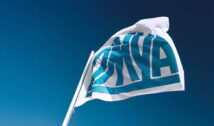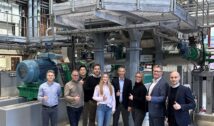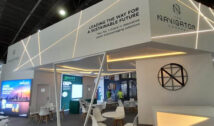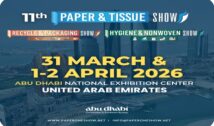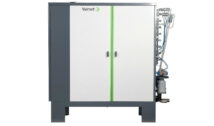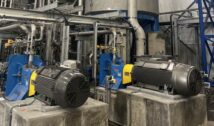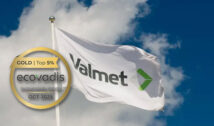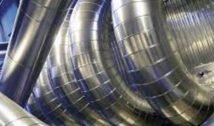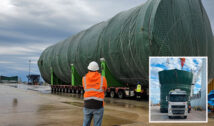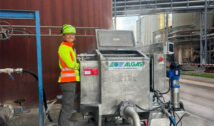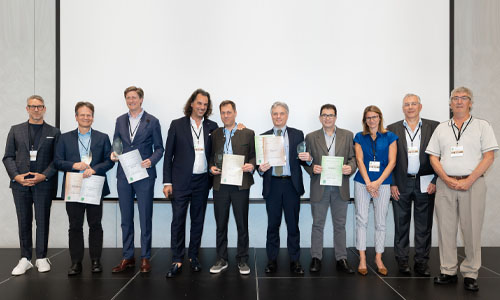
From 22–24 May, more than 130 industry professionals convened in Thessaloniki, Greece, for the EUROSAC Congress 2025. Under the theme “Envisioning the paper sacks of tomorrow,” the event featured expert presentations, dynamic discussions and valuable networking opportunities. Key topics included regulatory developments, paper sack recycling and the necessary behavioural changes. The EUROSAC Grand Prix Award took centre stage, showcasing the industry’s most forward-thinking projects. The Gold Award went to eXpandyble from dy-pack, with Silver awarded to W. Gröning and Billerud for their joint development Future-Proof Paper Sack for Low-Carbon Cement. Mondi received Bronze for its re/cycle PaperPlus Bag Advanced, while the Public Choice Award went to ConFlex® HeatSeal by Billerud.
“We are living in complex times shaped by geo-economic challenges,” said EUROSAC President Alessandro Selmin at the opening. “That makes platforms like the congress all the more vital to address key industry issues and shape the future through our members’ commitment and our organisation’s strength.”
Positive market trend
After a sharp decline in 2023, the European paper sack market showed signs of recovery in 2024. Deliveries rose by 2.2% to 5.32 billion units. Growth was strongest in food products (excluding milk powder) at +6.8%, followed by animal feed and chemical products (both +6.2%). While cement, milk powder and minerals continued to decline, the drop slowed, pointing to stabilisation. The building materials segment (excluding cement) also contributed with a 3.1% increase. A glimpse into the first quarter of 2025 suggests an even more solid upward trend with increases across all sectors.
Preparing for the latest EU legislation
Regulatory developments remain a driving force in the industry. Laura Mazzei from CITPA provided an overview of current legislative policies trends shaping the industry, such as the 2050 decarbonisation goal and retaining resources longer in the economy. Her message: packaging must be functional, designed for recycling and adapted to increasing legal complexity. Ulrika Wedberg and Robert Torstensson from Billerud outlined challenges and practical steps to prepare for the European Deforestation Regulation (EUDR). A subsequent round table gave insights into paper sack recycling initiatives across various European countries. The industry has set up an alliance involving over 70 companies from across the entire construction value chain and 180 construction sites, aiming to advance circularity through multi-material recycling and scalable pilot projects. The key takeaway: circularity doesn’t happen by itself – but with cross-industry collaboration, it can be transformed into a viable business model.
Driving sustainability with behavioural strategies
Especially when it comes to driving circularity, the industry faces the challenge of motivating various stakeholders to actively support paper sack recycling. Sam Gray from RARE Europe introduced behaviour-centred design as a powerful approach to tackling sustainability challenges. Instead of relying on regulations, financial incentives or information campaigns, Gray highlighted the need to understand the psychological and social context behind human behaviour. People tend to respond more positively to emotional appeals like pride, rather than guilt or shame. They are more likely to adopt behaviours that seem easy and are already practiced by others. Gray’s clear message: “Make the right choice the easy choice.”
Paper sacks vs. WPP sacks – a comparative view
The role of 50 kg woven polypropylene (WPP) cement sacks in countries outside Europe was compared to paper-based alternatives. Thomas Hilling from Haver & Boecker and Dominik Wörsdörfer from Windmöller & Hölscher shared insights into market developments, production, applications, handling and technical performance. According to their observations, paper sack production requires three times less space, generates three times less waste, uses only 20% of the energy and just one-tenth of the manpower compared to WPP sack production. Complementing this, Elin Gordon from CEPI Eurokraft presented findings from a recent lab study comparing filling speed, product loss, dust generation and carbon footprint across both packaging types. The results clearly highlight the advantages of paper sacks: they can be filled 21% faster, reduce product loss by a factor of four, generate only a third of the dust and only half the carbon footprint in comparison with WPP sacks.
EUROSAC Grand Prix Award 2025
The EUROSAC Grand Prix honoured outstanding innovation in performance, sustainability and customer value. “It’s a showcase of what modern paper sack technology can achieve – and how our industry envisions the paper sacks of tomorrow,” said EUROSAC President Alessandro Selmin. “What looks like a simple paper sack often hides cutting-edge technology.” Praising the high quality of the submissions provided by the participants, jury president Herbert Rode noted that “the winning solutions clearly stood out.”
Grand Prix Award winners 2025
The Gold Award went to eXpandyble from dy-pack. The sack offers a smart and flexible solution: it expands precisely to the required volume during filling – by up to 30%. Whether the adjustment needed is 5% or 25%, the sack adapts automatically and ensures optimal filling accuracy. One sack size can be used for various products reducing stock and simplifying logistics. An additional benefit: lower internal pressure during filling enables a noticeably faster filling process. The sack is considerably stronger than conventional sacks, reducing breakage. The sack’s surface supports water uptake during the recycling process, aligning with established recycling practices. “It solves a common customer problem and can help replace non-paper solutions where variable sizes are needed,” the jury noted.
The companies W. Gröning and Billerud were presented with the Silver Award for their joint project Future-Proof Paper Sack for Low-Carbon Cement. The solution combines ultra-breathable and semi-extensible sack kraft paper with an 8 μm HDPE film containing 35% PCR to meet future PPWR regulations. It ensures dust-free, high-efficiency filling of finer, low-carbon cement blends which are expected to become increasingly common. At the same time, the sack offers strong moisture protection, high strength and a reduced carbon footprint, using materials already available on the market. The jury highlighted the dual innovation: an improved paper porosity for finer cement blends and a recycled PE film performing in line with conventional options.
The Bronze Award was given to re/cycle PaperPlus Bag Advanced by Mondi. This high-performance paper sack features an advanced 20 μm barrier film that replaces standard 30–50 μm HDPE layers. It reduces plastic consumption by up to 60% while maintaining the same moisture protection. Customers benefit from reduced emissions, improved recyclability and compatibility with existing filling equipment, all while enhancing compliance with evolving EU regulations and preserving product performance. The jury praised the impressive film reduction and the product’s focus on recyclability and performance.
ConFlex® HeatSeal developed by Billerud impressed the audience and was honoured with the Public Choice Award. It is a recyclable, PE-free heat-sealable paper that replaces plastic wraps in pre-made bag and form-fill-seal applications. The clay-based coating ensures recyclability, making it a future-proof alternative. Used by a Swedish furniture brand, it cut plastic waste while reducing CO₂ emissions by estimated 50%, increasing line speed by 30% and boosting packing efficiency by 20%. With a CEPI recyclability score of 18/20 and food contact approval, the solution offers environmental and operational advantages.
Other Grand Prix entries
EUKA FLOUR BAG by Klabin is a plastic-free multiwall valve sack made 100% from short-fibre Eucalyptus paper. It features an innovative easy-open ribbon made solely from paper and a sealable valve using special resins instead of film. Designed for 25 kg wheat flour, the sack combines strong product protection, high print quality, excellent runnability, perfect logistics performance and improved resource efficiency.
Mondi presented as a second entry re/cycle ProtectorBAG PocketForm, a fully paper-based flexible packaging solution that replaces plastic in transport and storage. With up to seven customisable compartments and individual printing, it offers organised, branded and damage-minimising protection for diverse items – a versatility that opens opportunities across various industries. Its compact form and easy handling support logistics efficiency. Made from renewable, responsibly sourced paper, the packaging is recyclable and helps reduce plastic waste.
The Grand Prix entries embody this year’s congress motto, “Envisioning the paper sacks of tomorrow”, and reflect the shared ambition of the paper sack and sack kraft paper industry to shape the future through innovation.


